Learn how to grow more tomatoes, without more work or chemical fertilizers! These 10 tips for growing big tomatoes really worked for us!
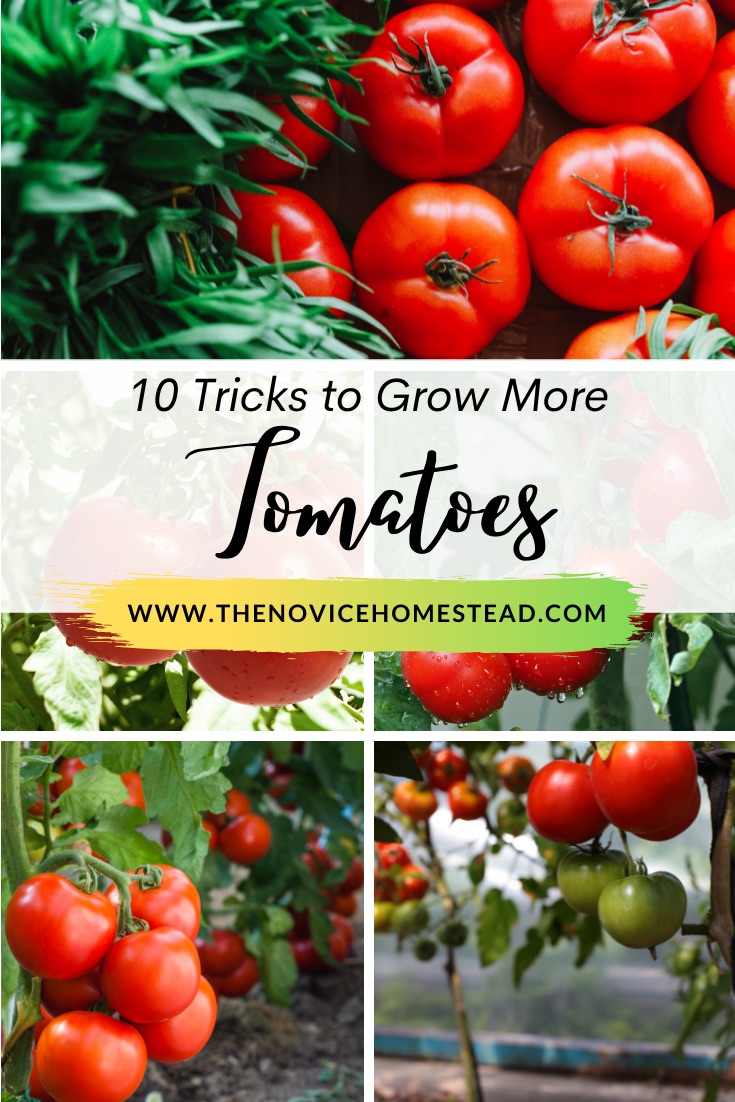
Tomatoes are one of the most popular things to plant in a vegetable garden. They’re easy to grow and can be very productive under the right conditions.
However, they’re not entirely foolproof!
It’s taken me a couple years to get the hang of growing the best tomato plants possible, but this year’s crop is proof that these steps work!
Just weeks after planting, we already have dozens of tomatoes in various stages of ripening. We’ve even enjoyed a few already and they were big, beautiful, and delicious!
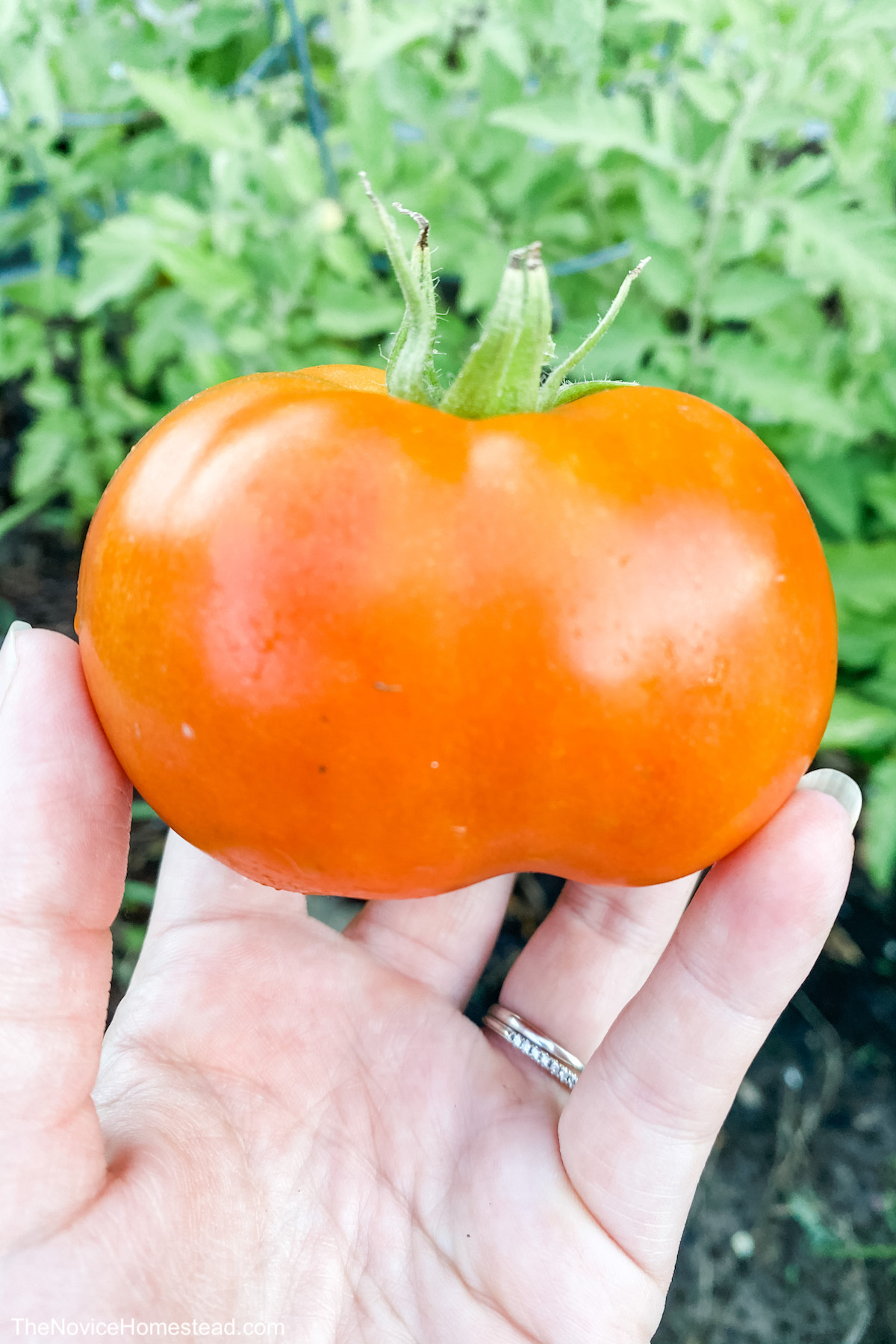
10 Tips to Grow More Tomatoes
Want to know how we grow big tomatoes? The following ten tricks will make your tomatoes plants happy, healthy, and bountiful!
1. Pick the Right Time to Plant
Tomatoes are a warm weather plant — they do not like freezing temperatures and often won’t survive a cold snap.
On the other hand, they do not love extreme heat either. When temperatures hit the 90s and above, tomato plants will produce fewer, smaller fruit, and they may not ripen all the way.
The best time to plant is immediately after the last chance of frost. This gives your plants the maximum amount of time to grow before summer hits (which is especially important here in Texas!)
Related: Click here to learn which plants can survive a Texas summer!
2. Prep Your Soil with Compost
Nutrient rich soil is crucial for developing vibrant, healthy, and productive tomato plants. A rich compost “feeds” your plants, even better perhaps than adding a commercial fertilizer. Plus, it’s organic!
We prepped our soil before planting by adding a wheelbarrow-full of compost to each raised garden bed. Then we worked it in with a pitchfork to make a nice nutritious mix.
Related: Learn more about how to start a compost pile here!
3. Loosen Roots Before Planting
If you’re starting from pre-sprouted plants, you may notice that everything kind of sticks together when you slide them out of their plastic pot. That’s because the roots are wrapped up around each other and the potting soil in a big wad.
Before planting, give the plant a gentle shake to loosen up the roots. If needed, use your hands to untangle them. When you’ve “freed” the roots, they’ll have an easier time spreading out and soaking in water and nourishment from the soil.
4. Encourage Deeper Roots
Speaking of roots, the more the better! Tomato plants can sprout roots all the way up the stem, so if more of the stem is underground to start, your plant will develop more roots. All you need to do to make it happen is bury the stem up to the first set of leaves.
To make your plant fit into the hole you dug, you may need to gently curve the stem of the plant. The underground portion of the stem doesn’t have to be 100% vertical. You can keep the plant itself upright by using tomato cages or stakes (see below).
5. Support Your Plants
It’s common to see tomatoes grown in metal scaffolding known as “tomato cages.” You can also gently tie tomato stalks to a stake that is secured in the ground.
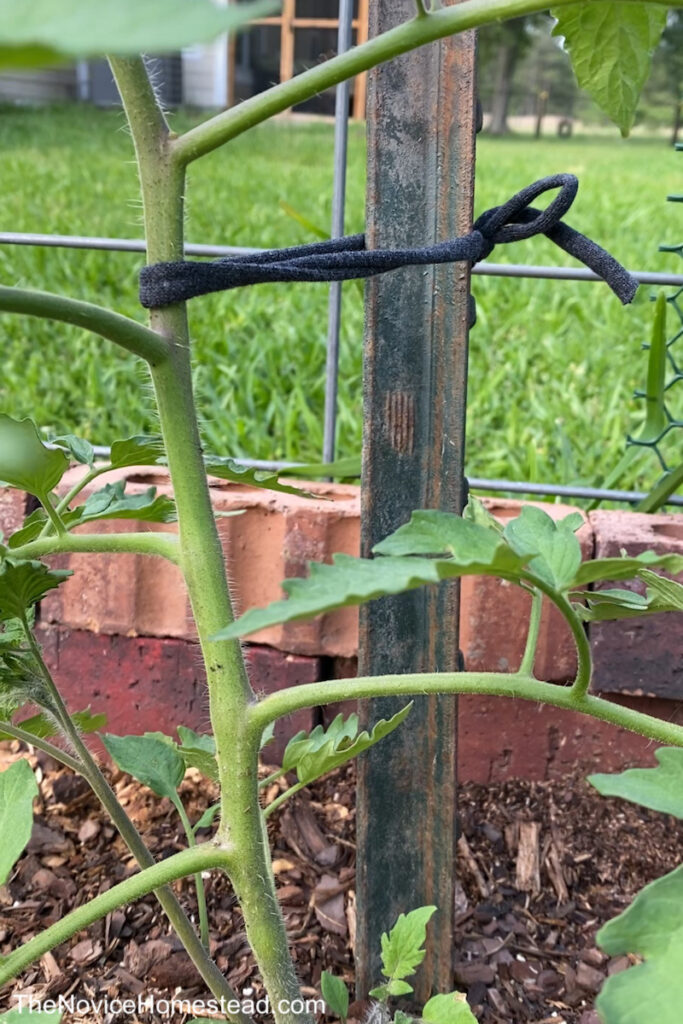
But why?
Tomato cages and/or supports serve two main purposes:
- Encourages plants to grow UP instead of outward, preventing crowding and allowing you to maximize garden space. More plants = more tomatoes.
- Helps support the weight of the tomatoes themselves, which grow increasingly heavy as they develop and ripen. When fruits end up sitting on the ground, they’re more susceptible to rot and disease from wet dirt.
6. Companion planting
Having good neighbors makes a big difference! Planting dill, cilantro, or basil near your tomatoes will attract wasps that kill tomato hornworms, one of the most common tomato pests.
I’ve even heard that basil improves the flavor of tomatoes! I’ve only ever planted my tomatoes with basil nearby, so I have nothing to compare to, but I can tell you that they taste AMAZING and so much better than store-bought!
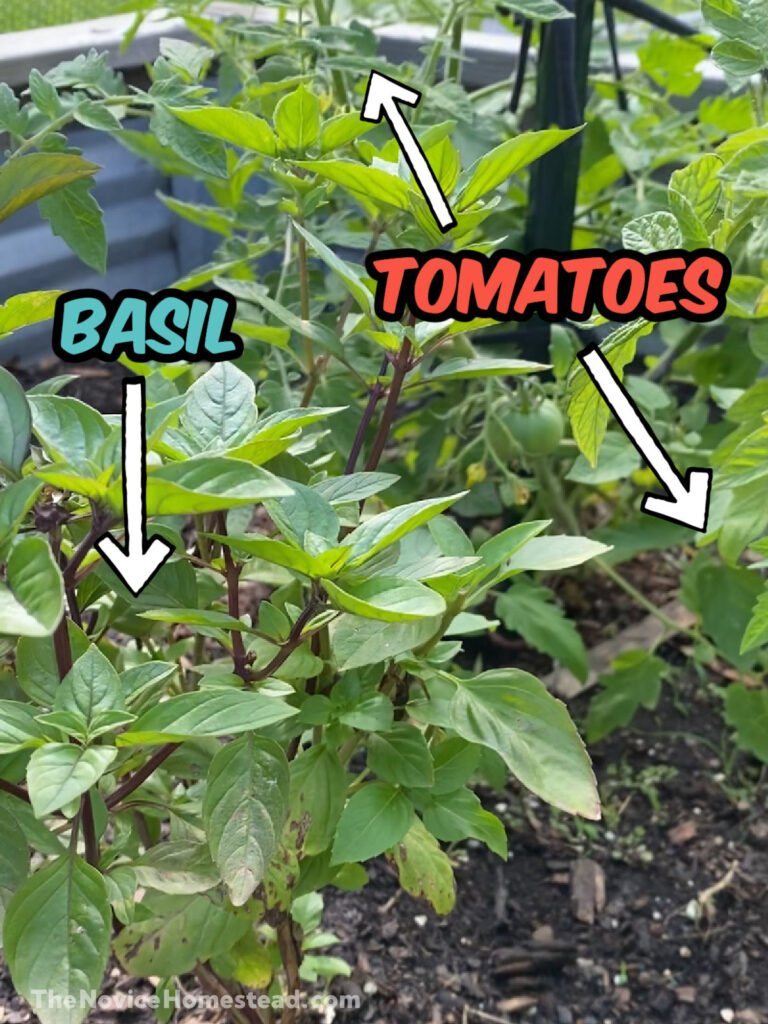
7. Water Well
Tomatoes need ample water to thrive, so during warm weather you may need to water daily. I’ve found the best results by watering deeply once a day or every other day. By thoroughly soaking the soil, you encourage deeper rooting. When only the top layer of soil gets wet, roots will develop closer to the surface, which does not make for as strong a plant.
8. Mulch for Moisture
When temperatures rise, soil dries out more rapidly. To conserve moisture, add a layer of mulch to your garden. Mulching traps moisture in the soil by blocking evaporation and blocking sunlight to keep soil cooler.
As an added bonus, it also helps keep as many weeds from sprouting and may help prevent soil-borne diseases from affecting your plants.
We used dry hay as mulch for our gardens last year, and it helped our plants make it through an especially brutal Texas summer.
Of course you can buy mulch from your local garden store, but there are other more thrifty options too!
Materials That Can be Used as Mulch:
- Straw or Hay
- Compost
- Grass Clippings
- Pine Needles
- Leaves
9. Snip the Suckers
“Suckers” are sprouts that grow on a tomato plant between the main stem and side stems. Imagine that the main stalk and a brand form an “elbow” and in that elbow a little sprout starts to form. These suckers will eventually develop into a new branch with flowers and fruit, which sounds like a great thing.
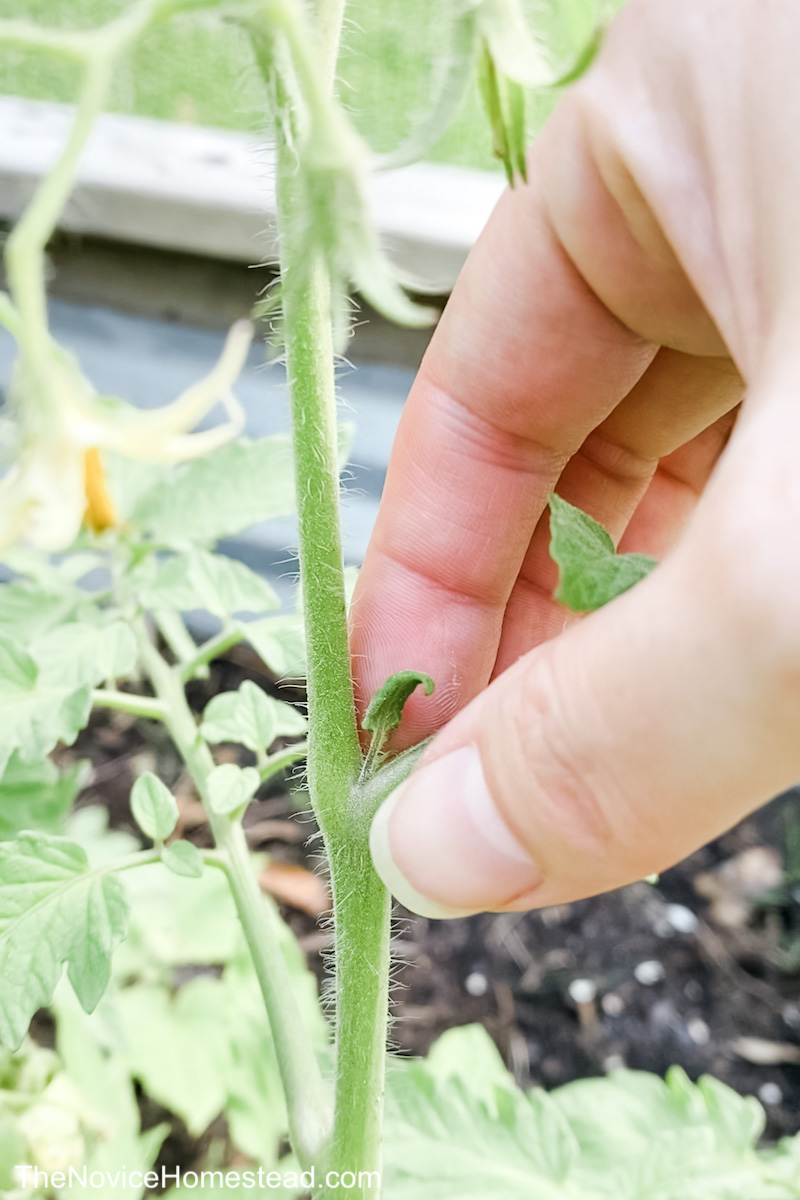
However, if you allow ALL of the suckers to grow, your plants will end up big and bushy. They may even create TOO much fruit — meaning you’ll end up with smaller tomatoes since there are so many of them.
I usually prune some of the suckers, so that the energy they would have used to develop will instead go to growing my main part of the plant and bigger tomatoes.
Alternatively, you can prune away wilting branches or those that may be affected by blight and allow the new suckers to grow in their place.
Related: Learn more about how to treat and prevent tomato blight here!
10. Don’t Chase away Bees
Bees are a garden’s best friend! They are essential for pollination, which leads to fruit development in your vegetable garden. Some gardeners even plant flowers near their vegetable garden to attract more bees.
I usually let nature do its thing and we end up with plenty of bees in our garden anyway. The most important thing is to make sure that your garden is bee friendly!
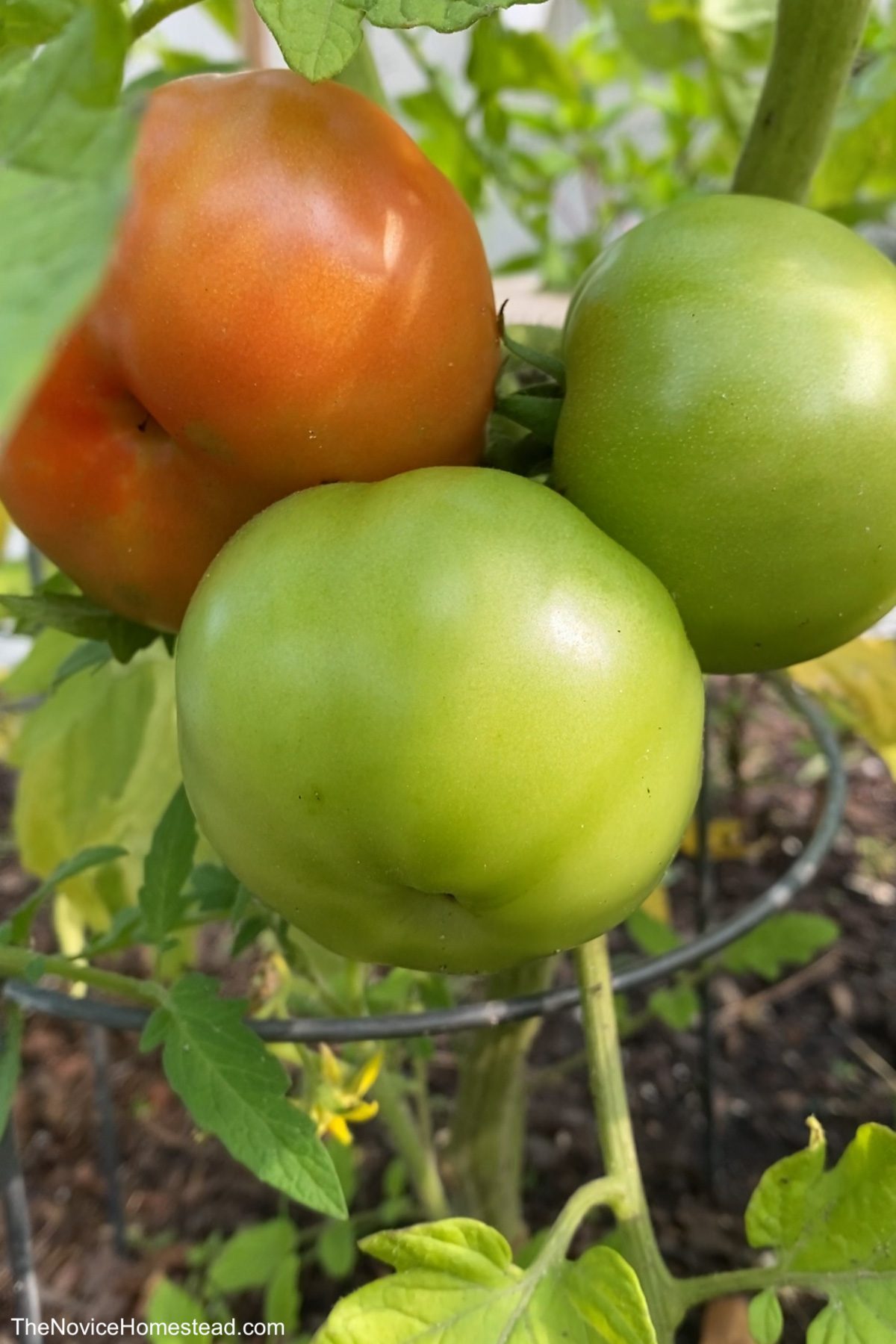
The most important thing I’ve learned when it comes to growing tomatoes is to pay attention to them. They will let you know when they need something!
Wilty, yellow leaves are a clue that something is wrong: not enough water, too much water, or even disease.
Fruit that is not ripening or even splitting may not be getting enough water or it may be suffering from high temperatures.
However, with regular care and attention, your tomato plants should thrive! I’m not a natural green thumb, so if I can grow more tomatoes, anyone can!
Read This Next: How to Store Tomatoes so they Last Longer and Taste Better!
Nice information and useful for me